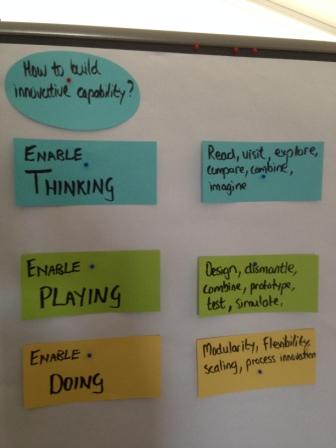This is a revised edition of a blog post I wrote back in 2011.
When working on the improvement of innovation systems in developing countries, we have to work with firms. These firms have several roles, and there are three units of analysis:
- The firm is an important unit of analysis of innovative practices (product, process, business model).
- The firm is also a unit of analysis in terms of cooperation and collaboration, thus its ability to cooperate with rivals is an important consideration when we design interventions.
- Working with the right firms also provides an important source of technology and knowledge spillovers. This is where the challenge comes in for development practitioners.
Generally, firms that are able to lead the way, or could be good role models, are difficult to involve in development programmes for a variety of reasons. I won’t discuss that right now. What is important to remember is that most firms not only absorb or use technology and knowledge, they are also the main sources of knowledge and technology. This is both from a supply perspective (equipment suppliers, technical or specialist sources of knowledge, etc.) and from a demand perspective (demanding customers, sophisticated demand). Whether firms are aware of their role as disseminators of knowledge of technology is another story!
I will rather focus on how to identify the firms that we can work with to improve innovation and competence in all three units of analysis discussed above. Remember, our objective is to find ways to improve the dynamic in innovation systems that will result in the modernisation and technological upgrading of industries and regions.
More than 25 years ago Bo Carlsson and Gunnar Eliasson described a concept called “economic competence”. At the time they defined economic competence as “the ability to identify, expand and exploit business opportunities” (Carlsson and Eliasson, 1991). This is a useful definition as we have to remember that we cannot innovate on behalf of a broader industry. Somehow we must work with those firms that are able to innovate, imitate, adapt and integrate new knowledge and ideas.
According to Carlsson and Eliasson, economic or business competence has four main components:
- Selective (strategic) capability: the ability to make innovative choices of markets, products, technologies and overall organisational structure; to engage in entrepreneurial activity; and especially to select key personnel and acquire key resources, including new competence. This aspect has been amply illustrated in recent years as many companies have struggled to define their corporate identities and strategies as distinct from their competitive strategies in each individual business unit (Porter, 1991).
- Organisational (integrative, coordinating) capability: the ability to organise the business units in such a way that there is greater value in the corporate entity as a whole than in the sum of the individual parts.
- Technical (functional) ability: this relates to the various functions within the firm, such as production, marketing, engineering, research and development, as well as product-specific capabilities. These are the areas of activity in which firms can compare themselves to their peers or leading competitors.
- Learning ability, or the shaping of a corporate culture which encourages continual change in response to changes in the environment.
Economic competence must be present in sufficient quantity and quality on the part of all relevant economic agents, users as well as suppliers, government agents, etc. in order for the technological system to function well. This is both true at a local or regional level, our a national or sectoral level.
If the buyers are not competent to demand or use new technology – or alternatively, if the suppliers are not able or willing to supply it – even a major technical breakthrough has no practical value or may even have negative value if competitors are quicker to take advantage of it.
I think that this business approach of choosing the entrepreneurs that we work with is very relevant to finding the people who can absorb new ideas and make them work in a developing country context. I would also go so far as to state that I do not believe that it is feasible to select “change agents” according to social criteria such as gender, age, etc. – but that we recognise that change within economic systems happens because of the economic competencies of the people who are recognised in the system (regardless of their demographic data). The reality is that you cannot be competent on behalf of other people!
I challenge you to review the firms that you are working with to see if they are economically competent!
Sources:
Carlsson, B. and Eliasson, G. (1991). The nature and importance of economic competence. Working Paper No. 294, The Industrial Institute for Economic and Social Research (IUI).
Porter, M.E. (1991). “Towards a dynamic theory of strategy“, Strategic Management Journal, 12 (Winter Special Issue), pp. 95-117.






